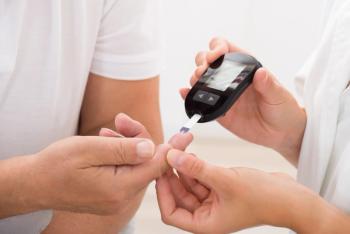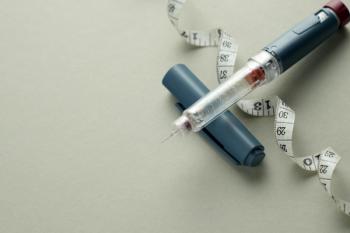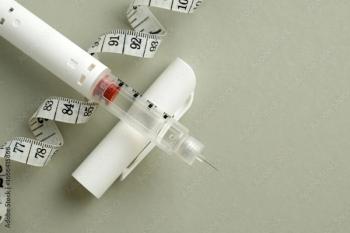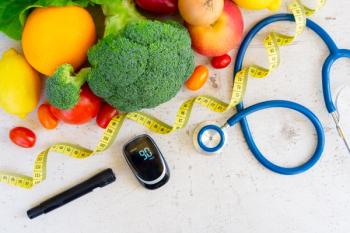
- Drug Topics October 2023
- Volume 167
- Issue 09
Pediatric T1D Management Adherence System Evaluated
Technology may not help teens with the emotional and physical weight of managing the disease, study results show.
Adherence to just about anything can be difficult for teenagers. For adolescents with type 1 diabetes (T1D), though, nonadherence can be life-threatening.
To help teenagers with the difficult emotional and physical weight of managing this disease, numerous tools, technology platforms, and interventions have been developed. A research team recently published a review in Diabetes Therapy of CloudConnect, a 40-year-old automated messaging system.
The study followed dozens of parents and teenagers managing T1D over a 12-month period. CloudConnect offered teens and their caregivers weekly, automated advice specific to their T1D management. The project’s goal was to see whether the automated platform could facilitate improved shared responsibility between teenagers with T1D and their parents and lead to improved glycemic control.
The study group consisted of 86 participants, including 43 teenagers with T1D who were not on automated insulin delivery systems. The intervention program was compared with traditional care models for teens with T1D. It provided weekly T1D management advice such as insulin dose adjustments using data gleaned from continuous glucose monitors and personal health devices. The hope was that these reports could be used to help improve communication specific to T1D management, hemoglobin A1c (HbA1c), the amount of time spent in target glucose ranges, and other psychological aspects of the disease.
Researchers found that the usual care group and the intervention group had similar HbA1c levels and time within blood glucose goal ranges, but both parents and teens reported little change in communication strategies. Parents in the CloudConnect group reported feeling less conflict over T1D-related issues with the use of the tool, but this sentiment was not shared by teens in the study. Additionally, compared with “the UsualCare + CGM group, adolescents and parents in the CloudConnect reported a more negative tone of T1D-related communication,” the authors wrote.
There were more frequent changes of insulin dosing in the CloudConnect group, but no real change in overall quality-of-life measures. Despite hope that CloudConnect could improve communication and outcomes for teens with T1D, the researchers concluded that better tools are needed to improve disease management in adolescents who aren’t on automated insulin delivery systems.
Part of the difficulty in managing T1D in teens is the fact that teens desire more autonomy but also have unpredictable schedules, fluctuating insulin demands, and relationship pressures with peers and parents that could complicate adherence, according to the researchers. Adolescence is a period during which teen patients are transitioning to more independent T1D control. This shifting of responsibility from the caregiver to the patient can lead to more conflict than usual, and the researchers noted that more positive communication is usually associated with improved HbA1c values. Ultimately, the results showed that the CloudConnect tool did little to improve outcomes in teens with T1D and may have made the tone of interactions on diabetes management more negative overall.
Mark D. DeBoer, MD, MSc, MCR, a pediatric endocrinologist at the University of Virginia School of Medicine in Charlottesville and the study’s lead author, said perceptions of a negative tone weren’t all that surprising and that the results highlight how variable T1D communication between teens and their caregivers can be.
“The adolescents in the control group reported a decrease in frequency of communication from a score of 12.2 to 11.5, while the CloudConnect group had an increase from 12.0 to 12.3,” DeBoer said. “The difference was bigger for parents, where the control group went from 11 to 9 and the CloudConnect groups went from 11 to 12.”
Both trends moved in the direction the research team expected, DeBoer said, but the amount of variability on both sides made it difficult to prove statistical significance. “This system was designed to bring parent-child dyads together to look at the facts about the blood sugar numbers,” he explained. “But adolescence is a difficult time in diabetes control, and it’s likely that the facts did not always line up the way the parents hoped.”
These results highlight that high-tech tools aren’t a surefire way to improve outcomes. “Disease-related communication is still important, but relying on a product to change or improve that communication is not a guarantee that you will improve the level of communication,” DeBoer said.
Reference
De Boer MD, Valdez R, Corbett JP, et al. Effect of an automated advice algorithm (CloudConnect) on adolescent-parent diabetes-specific communication and glycemic Management: a randomized trial. Diabetes Ther. 2023;14(5):899-913. doi:10.1007/s13300-023-01401-9
Articles in this issue
about 2 years ago
Preventing Severe Respiratory Infections in Childrenabout 2 years ago
The ABCs of CBD: Cannabinoids in Dermatology and Skin Careabout 2 years ago
Quizartinib Approved for Newly Diagnosed AML in Patients with ITDabout 2 years ago
Sickle Cell Disease Finally Getting Its Dueabout 2 years ago
Vitamin Supplementation May Help Reduce Endometriosis Related Painabout 2 years ago
Celebrating Women in Pharmacyabout 2 years ago
Biosimilars Are Bringing Affordability and AccessibilityNewsletter
Pharmacy practice is always changing. Stay ahead of the curve with the Drug Topics newsletter and get the latest drug information, industry trends, and patient care tips.































































































































































